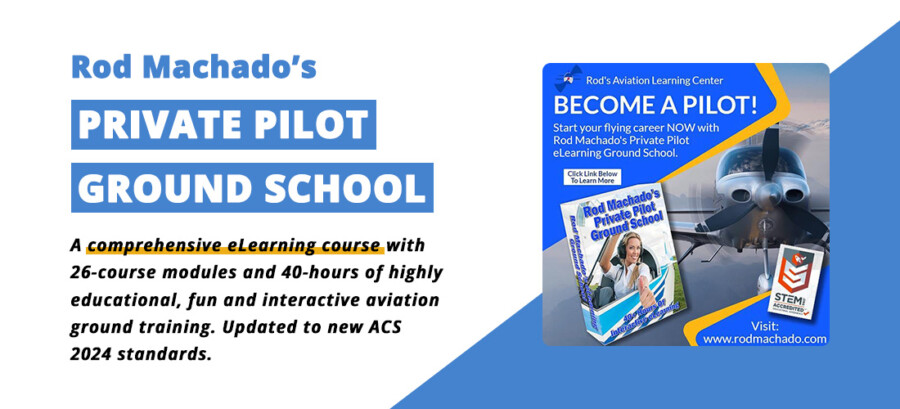How Long Can a Paraglider Stay in the Air?
6 January 2024 | Updated on November 04, 2024 | 0 comments
Have you ever wondered how long you can stay up in a paraglider? Paragliders, these lightweight inflatable wing aircraft, can offer an exhilarating experience in the sky. But just how long can they stay aloft? Let’s explore the factors that influence paraglider flight duration and the importance of weather conditions, pilot skill, and equipment.


Key Takeaways:
- A paraglider can stay in the air for several hours, with recreational pilots routinely achieving flights lasting three hours or more.
- The duration of a paragliding flight depends on various factors, including weather conditions, pilot skill, and thermal activity.
- Thermals, which are columns of rising air, play a significant role in extending flight duration by providing lift.
- Weather conditions, wind speed, and the ability to read and predict thermals also affect flight duration.
- Pilot skill and experience are crucial in finding and utilizing thermals effectively, improving flight endurance.
How long can a paraglider stay in the air?
Paragliders can stay in the air for several hours, with the longest recorded flight lasting just under 12 hours. The duration of a paragliding flight depends on various factors, including weather conditions, pilot skill, and thermal activity.
Factors that Influence Flight Duration
The duration of a paraglider flight is influenced by several factors, which determine the maximum time a paraglider can stay in the air at a time. Let’s explore the key elements that impact how long a pilot can stay in the air.
The Availability of Thermal Currents
Thermal currents, which are columns of rising air, play a significant role in extending flight duration. Pilots can stay aloft in thermals by circling within them. By gaining altitude within these thermals, pilots can prolong their time in the air, maximizing their paragliding flight time.
Weather Conditions and Wind Speed
The weather conditions and wind speed also have a direct impact on flight duration. Strong headwinds can reduce the forward progress of the paraglider, limiting the maximum time in the air. On the other hand, favorable wind conditions can aid the pilot in extending their paragliding flight duration by providing additional lift and improving their overall efficiency.
Skill and Experience of the Pilot
The skill and experience of the pilot play a crucial role in prolonging their flight time. Experienced pilots have a better understanding of the thermal activity and know how to effectively find and utilize thermals. Their ability to read the weather conditions and make informed decisions also enables them to stay in the air for longer periods, further maximizing their paragliding flight time.
Importance of Weather Conditions


When it comes to paragliding, weather conditions are of utmost importance for determining how long a paraglider can stay in the air. Thermals, which are created by the uneven heating of the Earth’s surface, play a crucial role in providing the necessary lift for the paraglider to stay afloat. The presence and strength of thermals depend on various factors such as the time of day, solar radiation, wind patterns, and terrain.
Pilots who wish to maximize their flight duration need to possess the ability to read and interpret weather conditions accurately. By doing so, they can identify and predict where thermals are most likely to be present, allowing them to take advantage and stay airborne for extended periods. Strong and consistent thermals offer pilots the opportunity to explore the skies for longer durations, while weak or inconsistent thermals may limit their flight time.
Mastering the art of assessing weather conditions and understanding thermal activity is essential for paragliders aiming to exercise their paragliding stamina and stay aloft. By being aware of the environmental factors that contribute to the availability and strength of thermals, pilots can make informed decisions and select flight paths that maximize their time in the air.
Furthermore, pilots must stay up-to-date with meteorological forecasts and observe weather patterns to enhance their chances of encountering favorable conditions for paragliding. By actively monitoring weather information, pilots can plan their flights strategically, thus increasing their paragliding time limit.
The significance of weather conditions in paragliding cannot be overstated. A thorough understanding of how thermals form, their behavior, and their influence on flight duration will empower pilots to make the most of their paragliding experience and navigate the skies with confidence.
Impact of Pilot Skill and Experience
The skill and experience of the pilot have a significant impact on the duration of their paragliding flights. Experienced pilots possess the knowledge and techniques to maximize their time in the air and achieve greater paragliding endurance. They are adept at locating and utilizing thermals, which are crucial for sustaining flight. By identifying areas of rising air and skillfully maneuvering within them, experienced pilots can extend their flight duration and cover longer distances.
Pilot skill and experience also contribute to their understanding of weather conditions. Seasoned aviators can assess weather patterns, wind speed, and atmospheric conditions to make informed decisions about when and where to fly. This knowledge allows them to capitalize on optimal conditions and avoid situations that may limit their flight time. Furthermore, experienced pilots have developed the mental and physical stamina required for prolonged flights. They can maintain focus, alertness, and the ability to make critical decisions, ensuring their safety and optimizing their performance.
“Experience is key in paragliding. It allows pilots to read the skies, anticipate thermals, and strategize their flight path to enhance endurance and enjoyment.”
| Benefits of Pilot Skill and Experience | Details |
|---|---|
| Improved Thermaling Techniques | Experienced pilots are proficient in locating and utilizing thermals, which contributes to longer flight durations. |
| Enhanced Decision-Making | Experienced pilots have a better understanding of weather conditions, enabling them to make informed choices regarding flight planning. |
| Increased Stamina and Focus | Experienced pilots have developed the mental and physical endurance required for prolonged flights, allowing them to remain alert and focused. |
| Optimized Performance | Experienced pilots can optimize their performance by utilizing their skills and knowledge, resulting in longer flight durations. |
Equipment and Gear Considerations
When it comes to paragliding, the type and quality of equipment and gear used can significantly impact the duration of the flight. Modern paraglider wings are designed with high glide ratios, allowing for longer and more efficient flights. These wings are made of lightweight, durable materials that provide stability and performance, enabling pilots to stay in the air for extended periods.
Ensuring the wing is in good condition and well-maintained is essential for optimizing flight duration. Regular inspections and maintenance checks can help pilots identify any potential issues and ensure that the wing is operating at its best. By keeping the wing in top shape, pilots can maximize their paraglider stay duration and enjoy a more comfortable and secure flight.
In addition to the wing, other equipment such as harnesses and reserves also play a crucial role in flight duration. A comfortable and well-fitted harness allows pilots to maintain optimal control and stability throughout the flight. Reserves, or emergency parachutes, provide an added safety measure and ensure that pilots have a backup plan in case of unforeseen circumstances.
Gear Checklist for Extended Flights
To help paragliders maximize their flight duration and ensure a safe and enjoyable experience, here is a gear checklist to consider:
- Paraglider wing: Check for any signs of wear and tear, ensure proper line tension, and inspect the leading edge for damage.
- Harness: Verify that the harness is properly adjusted, comfortable, and securely fastened.
- Reserve parachute: Make sure the reserve parachute is packed correctly, and the handle is easily accessible in case of an emergency.
- Helmet: Wear a properly fitting helmet to protect the head in case of a hard landing or collision.
- Flight instruments: Utilize flight instruments such as variometers and GPS devices to track altitude, speed, and navigation during the flight.
- Appropriate clothing: Dress in layers to adapt to changing weather conditions and ensure comfort throughout the flight.
By taking these gear considerations into account, paragliders can enhance their paragliding endurance, extend their flight duration, and make the most of their time in the air.
Training and Skill Development
Proper training and skill development are crucial for enhancing paragliding endurance and extending flight duration. Novice pilots should enroll in a certification course to acquire the fundamentals of paragliding, including knowledge of thermals, proficiency in managing weather conditions, and mastering flying techniques.
With experience and practice, pilots can refine their skills to effectively locate and utilize thermals, thus improving their ability to stay in the air for longer periods. Physical conditioning and mental alertness also play a vital role in maintaining stamina during extended flights.
“Training gives us an understanding of the key elements needed to stay in the air and enjoy paragliding to the fullest. It teaches us how to read the sky, assess weather conditions, and harness the power of thermals.”
Benefits of Training and Skill Development
- Enhances paragliding endurance
- Extends flight duration
- Improves proficiency in utilizing thermals
- Enhances safety awareness and decision-making skills
- Increase confidence in navigating diverse weather conditions
Safety Considerations
When participating in paragliding activities, it is essential to prioritize safety above all else. Ensuring a safe and enjoyable experience requires adhering to certain considerations and precautions. By following these safety measures, pilots can mitigate potential risks and maintain their well-being while staying airborne in a paraglider.
Pilot Skill and Comfort Zone
One of the most critical safety considerations is for pilots to fly within their skill level and comfort zone. Pushing beyond personal limits or attempting flights in unfavorable weather conditions can compromise safety and increase the risk of accidents. Pilots must prioritize their own capabilities and experience to make informed decisions about flight duration and difficulty.
Equipment Inspection and Maintenance
Another crucial aspect of paragliding safety is regularly inspecting and maintaining the equipment. Pilots should thoroughly check their paraglider wing, harness, and reserves before each flight to ensure proper functioning. Any signs of wear, tear, or damage should be addressed immediately to prevent equipment failure during flight. Reliable gear is essential for maintaining stability and mitigating potential risks.
Following Safety Protocols
A fundamental aspect of paragliding safety is following established safety protocols and guidelines. National governing bodies provide comprehensive safety guidelines that pilots should adhere to strictly. These guidelines exist to protect pilots and ensure standardized safety practices. By following these protocols, pilots can minimize risks and contribute to a safer paragliding community.
Remember, paragliding is an exhilarating adventure, but it should never compromise safety. By flying within personal capabilities, regularly maintaining equipment, and abiding by safety protocols, pilots can enjoy the thrill of staying airborne in a paraglider while prioritizing their well-being.
Conclusion
Paragliding offers an exhilarating experience, allowing pilots to soar through the skies for extended periods. With the right combination of factors, such as favorable weather conditions, pilot skill and experience, quality equipment, and a focus on safety, paragliders can achieve impressive flight durations.
Factors such as thermals, created by the uneven heating of the Earth’s surface, can provide the necessary lift for paragliders to stay aloft. Pilots who are skilled at finding and utilizing thermals can extend their flight durations by circling within them and gaining altitude. The availability of consistent and strong thermals, along with favorable wind patterns, can significantly impact paragliding endurance.
However, it’s crucial to prioritize safety throughout every flight. Following safety protocols and guidelines, including flying within one’s skill level and avoiding potentially dangerous weather conditions, is essential. Regular equipment maintenance and inspections, along with proper training and skill development, are vital for enhancing paragliding time limits and ensuring a safe and enjoyable experience for all pilots.
FAQ
What factors influence flight duration in a paraglider?
Flight duration in a paraglider is influenced by factors such as the availability of thermal currents, weather conditions, wind speed, and pilot skill. The ability to find and utilize thermals effectively and read weather conditions are crucial in prolonging flight duration.
How important are weather conditions in determining flight duration?
Weather conditions play a crucial role in determining how long a paraglider can stay in the air. The presence of thermals, which provide the necessary lift, depends on factors such as time of day, solar radiation, wind patterns, and terrain. Strong and consistent thermals can allow for extended flights, while weak or inconsistent thermals may limit flight time.
How does pilot skill and experience affect flight duration?
Experienced pilots are more adept at finding and utilizing thermals, allowing them to prolong their flight duration. They have a better understanding of weather conditions and can make informed decisions. Additionally, experienced pilots have developed the necessary stamina and endurance to handle long flights.
What impact does equipment and gear have on flight duration?
The type and quality of equipment and gear used by a paraglider can impact their flight duration. Modern paraglider wings with high glide ratios allow for longer and more efficient flights. Lightweight and durable materials provide stability and performance. Good maintenance of equipment is essential to optimize flight duration.
How can training and skill development improve paragliding endurance?
Proper training and skill development are essential for improving paragliding endurance. Novice pilots should undergo certification courses to learn the basics of paragliding and develop skills in thermals, weather conditions, and flying techniques. Experience and practice help pilots find and utilize thermals effectively, improving their ability to stay in the air for longer.
What safety considerations should be taken into account during paragliding?
Safety should always be a top priority during paragliding. Pilots must fly within their skill level and comfort zone, avoiding risky weather conditions or flights that exceed personal limits. Regular inspection and maintenance of equipment are necessary to ensure reliability and mitigate potential risks during flight. Following safety protocols and guidelines set by national governing bodies is essential for a safe and enjoyable paragliding experience.
How can flight duration be maximized in paragliding?
Flight duration in paragliding can be maximized through factors such as finding and utilizing thermals effectively, considering weather conditions, improving pilot skill and experience, using quality equipment, and following safety protocols. With the right training, practice, and equipment, pilots can extend their time in the air and enjoy longer flights.

































No comments posted yet
Comments are moderated for relevance and respectfulness.
Please keep the discussion focused on the topic of the article.